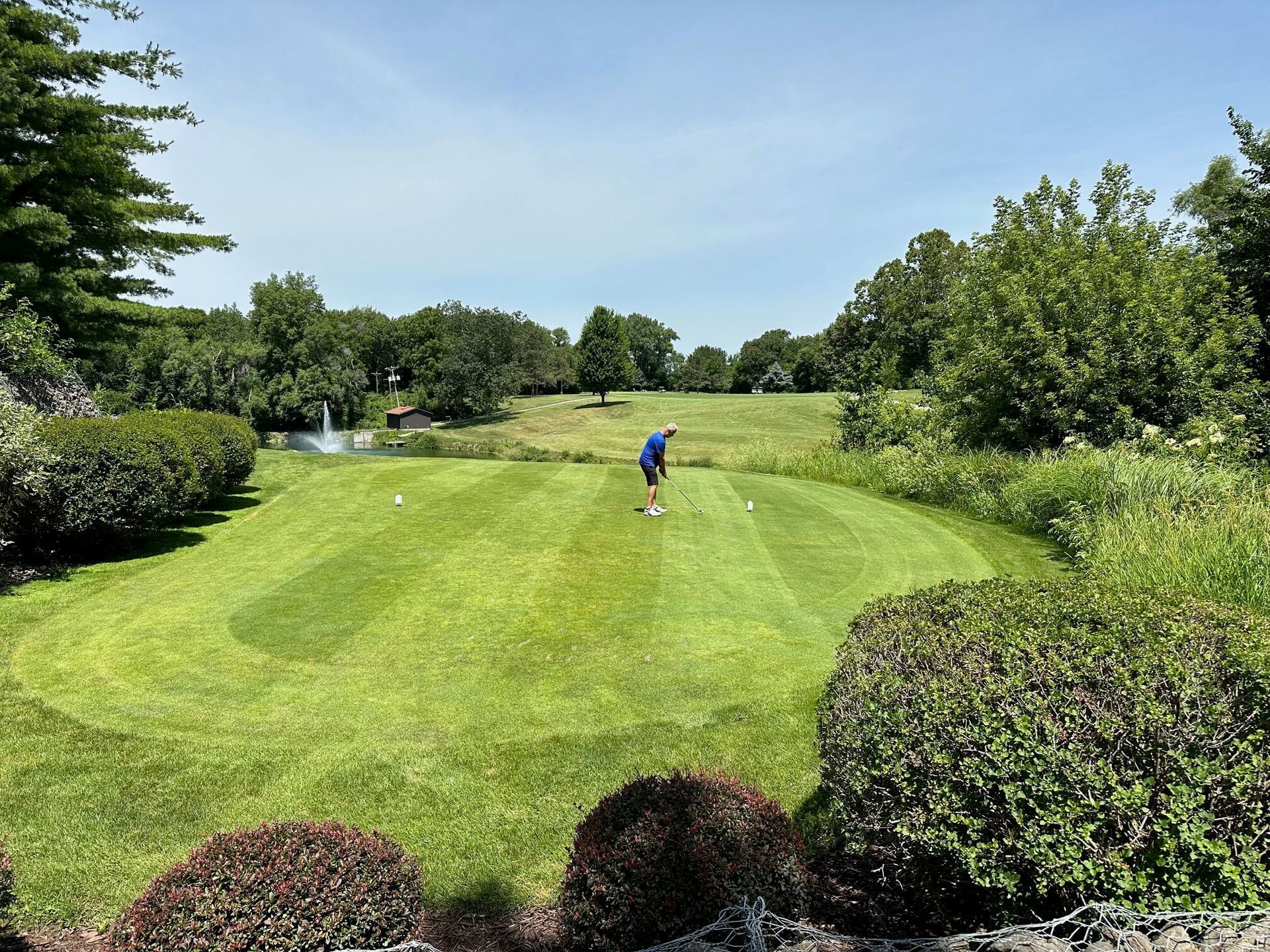Here's How to Choose the Right Tees in Golf, No Matter Your Abilities
Written by: Tony Schwartz
Last Updated: May 21, 2024
One of the most effective ways for making sure that your round of golf is enjoyable, approachable, and also challenging is by selecting the best tee box for your golf game. This is one area of the recreational game that is largely self-directed by golfers who are mostly unsure of which tees are best for them. Interestingly, there is not one set guide, methodology, or formula for determining which tees are best for you. In fact, there are a few methods you can try out when selecting your tee box. We'll go over those methods, provide helpful information that will allow you to better understand whether you're playing the right tees for your game or not, and hopefully we'll help you overcome any barriers to choosing which tees to play. After all, our aim is to make golf a more approachable and enjoyable sport for anyone who is enjoying it. We feel very confident that this is one area where many amateur golfers can 'get out of their own way' and set their weekend rounds up for more success.

Understanding the Basics
Before we dive into the various ways of choosing your tee box, it's important to understand the basics of where every hole on the golf course begins..
Generally golf courses will have 3-5+ tee boxes for golfers to choose from and your choice of tee box will have a very direct impact on your golf course experience. Not only will each hole play differently based on your tee box selection (your starting point), the length of each hole can vary significantly, too.
For most golf courses, tee boxes are distinguished by color. It is very common for golf courses to feature black, blue, white, and red tee boxes. On your scorecard, each tee box will note the hole's par, layout, and distance. If you look closely across all of the available tee boxes on the next golf course you play, you will notice that the tee box selection plays a factor in how long and how difficult the hole will play. Therefore, it is really important to select tee boxes that are accommodating to your game.
Let's discuss a few methods for choosing the right tees during your next round of golf.
Methods for Deciding Which Tees to Play From
The Self Directed Method
This is the most common way that amateur golfers choose their tees, and 93% of PGA and LPGA players believe that it is common for amateur golfers to choose too advanced of tees for their abilities. The same group of professional golfers believes that choosing a more appropriate set of tees is a very important way for golfers to have a more enjoyable experience on the golf course. The USGA reported that professionals and amateurs both recognize there is an issue of amateur golfers choosing too difficult of tee boxes to play from. Some of the reasons why people choose too difficult of tees can be lack of experience, peer pressure within the group they're playing in, or unfamiliarity with the golf course. Regardless of the reason behind the choice, the reality is that choosing the wrong tees is the wrong move. Below, we're going to dive into the more official ways for choosing the best tees for you. We'll dive into methodologies from the USGA, PGA, and other initiatives meant to answer the question, "Which tees should I play from?"
"Best Tees" by USGA
The USGA teamed up with a variety of notable organizations in the sport of golf to create the Best Tees approach to selecting the right tee box for you. Some orgs include American Society of Golf Course Architects (ASGCA), the National Golf Course Owners Association (NGCOA), the Golf Course Superintendents Association of America (GCSAA), the Golf Course Builders Association of America (GCBAA), the LPGA and PGA. After a variety of surveys and data analysis, the Best Tees system was born.
The primary factor in the Best Tees system is how far you hit a 7 iron.
According to the USGA, "our definition of tees that are a good fit for a golfer’s ability with golfers’ stated preferences for approach shot distances to develop a system that can recommend course length based off a single reference club. We chose a 7 iron because golfers had an accurate estimate of their hitting distance with this club in our golfer performance research and golf professionals often use this club as a point of reference during lessons."
Golfers may overestimate how far they can hit a driver, but they tend to have a better understanding of how far they hit a 7 iron. And because of that more accurate understanding of distance, it becomes a better variable to work from when determining the best golf tees to play from. Below is a table that offers a look into average distances of a 7 iron for the average male and female golfers. Based on those 7 iron yardages, you can see the Best Tees recommendation which uses total yardage as an output. Keep in mind that these are the recommendations for average golfers. If your skill level and distances are much higher then you can try other methods for determining which tees to play from.
| Avg Male Golfer | Avg Female Golfer | |
|---|---|---|
| 7 Iron Distance | 138 yards | 100 yards |
| Par 3 Distance | 152 yards | 109 yards |
| Par 4 Distance | 359 yards | 259 yards |
| Par 5 Distance | 476 yards | 353 yards |
| Best Tees Yardage Recommendation | 6,100 yards | 4,437 yards |
Driving Distance Method
There are two ways to use your driving distance to determine the best tee boxes for you. The first method is a quick reference table based on driver distances. Below is a chart that shows total yardage recommendations based on average driving distance.
The next way to use driver distance is referred to as the
Chris Mile method, which effectively takes your average driving distance and multiplies by 28. This is another method that we found to produce disproportionately high recommendations for yardages. Although, it may be a very helpful tool for high GHIN players or beginners.
| Avg Driver Distance | Suggested Yardage |
|---|---|
| 100 | 2,100 - 2,300 |
| 125 | 2,800 - 3,000 |
| 150 | 3,500 - 3,700 |
| 175 | 4,400 - 4,600 |
| 200 | 5,200 - 5,400 |
| 225 | 5,800 - 6,000 |
| 250 | 6,200 - 6,400 |
| 275 | 6,700 - 6,900 |
| 300+ | 7,000+ |
5 Iron Method
Another quick and easy way to determine which tees are best for you is by multiplying your average 5 iron distance by 36 to arrive at a total yardage recommendation. Of all the methods and calculations I've personally tried, this one seems to be the most accurate for me. When I tried the driving distance or Best Tees method, I received yardages that were 7,500+, but I'm a 6
GHIN. I probably should not be playing from tees that far back. Using the 5 iron method, my recommended total yardage is 6,840 which is a much more accurate reflection of an approachable yardage for my game.
In Conclusion
Choosing the right set of tees is a game-changing idea that needs to turn into a reality for more amateur golfers. Professional golfers as well as amateur golfing peers agree that we are collectively choosing the wrong tees and that we are making the game more difficult on ourselves than it needs to be. Rely on any method for selecting the right tee box which allows you to hit more mid-range irons for approach shots into the green. It's important for golfers to use a mixture and variety of clubs when out on the course, but if we are using only hybrids and woods for approach shots then we're likely playing the wrong tees. Whichever multiplication method you choose, make an effort to play tees that are the right fit for your game. Not only will the game be more enjoyable but it will feel more attainable to score well.
